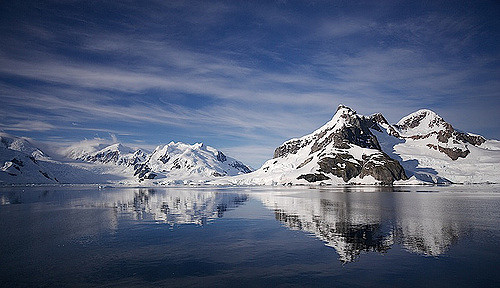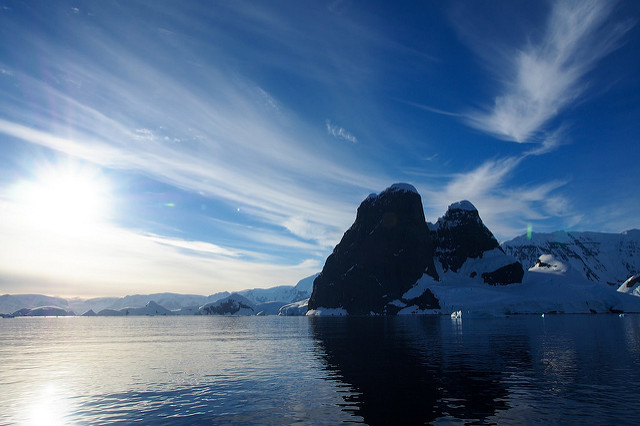
Scientists have recorded carbon dioxide levels rising above 400ppm (parts per million) in Antarctica – the highest level seen in at least 4 million years
The South Pole Observatory in Antarctica recorded these historic levels on May 23, according to reports. Antarctica is the last region to be affected by high concentrations of the greenhouse gas, leading many scientist to fear the future of our planet.
“The increase of carbon dioxide is everywhere, even as far away as you can get from civilization. If you emit carbon dioxide in New York, some fraction of it will be in the South Pole next year,” said Pieter Tans, a scientist monitoring carbon at the Environmental Science Research Laboratory.
In 2013, the world collectively passed the 440ppm mark; however, the remote continent of Antarctica remained below these levels until last month. The announcement, which was made by The National Oceanic and Atmospheric Administration (NOAA), comes after record breaking temperatures were witnessed across the world.
Antarctica carbon dioxide just hit 400 ppm https://t.co/sR355Gb2GR That hasn’t happened in 4 million years pic.twitter.com/fw7iO5byoZ
— Climate Central (@ClimateCentral) 19 June 2016
The month of May was the 13th in a row to exceed average temperatures for the time of year, making this year the hottest on record. Global temperature records – across land and sea – were broken in May, according to data from NASA and the US NOAA.
“The state of the climate so far this year gives us much cause for alarm,” said David Carlson, Director of the World Climate Research Programme. “Exceptionally high temperatures. Ice melt rates in March and May that we don’t normally see until July. Once-in-a-generation rainfall events. The super El Niño is only partly to blame. Abnormal is the new normal.”
These steadily rising temperatures are already greatly affecting the Arctic, with sea ice melting earlier than expected. In fact, in Barrow, Alaska, the northernmost city in the US, the snow will usually begin the melt in June or July. However, on 20 May the NOAA announced the earliest snow melt ever recorded in the city.
“The rapid changes in the Arctic are of particular concern. What happens in the Arctic affects the rest of the globe. The question is – will the rate of change continue? Will it accelerate? We are in uncharted territory,” Carlson said.

Climate change is no myth. It is not over exaggerated. Evidence of climate change can be seen all across the world. Rising sea levels, record breaking temperatures and dwindling fresh water sources are just a few of the many ways climate change is already affecting millions of people, plants and animals.
The levels of carbon dioxide currently in our atmosphere have not been this high since during the Miocene epoch, which occurred between 23.03 to 5.3 million years ago, according to a report published in the journal Science in 2009.
In fact, according to a recent study, the Earth has collectively crossed the point of no return, with researchers predicting that no living human will ever witness carbon dioxide concentrations in the atmosphere once again fall below a level of 400ppm.
“The far southern hemisphere was the last place on earth where CO2 had not yet reached this mark,” said Pieter Tans, the lead scientist of NOAA’s Global Greenhouse Gas Reference Network. “Global CO2 levels will not return to values below 400ppm in our lifetimes and almost certainly for much longer.”
According to scientists from the Met Office, a combination of human emissions and the effects of the recent El Niño, a climate pattern that describes the unusual warming of surface waters in the eastern tropical Pacific Ocean, has caused the sudden rise.
“The atmospheric carbon dioxide concentration is rising year-on-year due to human emissions, but this year it is getting an extra boost due to the recent El Niño event,” said Richard Betts, who led the Met Office research. “This warms and dries tropical ecosystems, reducing their uptake of carbon and exacerbating forest fires. Since human emissions are now 25 percent greater than in the last big El Niño in 1997/98, this all adds up to a record CO2 rise this year.”
Image: Flickr, Christopher Michel
You want to support Anonymous Independent & Investigative News? Please, follow us on Twitter: Follow @AnonymousNewsHQ
This Article (Carbon Dioxide Levels In Antarctica Rise Above 400ppm – the Highest Level Seen In 4 Million Years ) is free and open source. You have permission to republish this article under a Creative Commons license with attribution to the author and AnonHQ.com.




